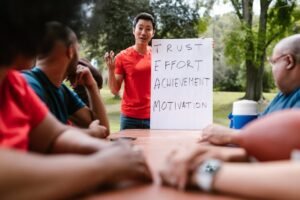LeSS Requirements Engineering: Best Practices
In the fast-paced world of software development, efficient requirements engineering is crucial for delivering successful projects. When scaling Agile, frameworks like Large-Scale Scrum (LeSS) offer guidance on maintaining the agility of smaller teams while addressing the complexities of larger projects. This blog post delves into the best practices of LeSS requirements engineering, providing you with actionable insights to optimize your development process.
Understanding LeSS: A Quick Overview
Large-Scale Scrum (LeSS) is an Agile framework designed for scaling Scrum to larger teams and organizations. It maintains the core Scrum principles but adapts them to handle the challenges of larger and more complex projects. LeSS focuses on simplicity, customer-centric development, and minimizing waste, making it a popular choice for organizations looking to scale Agile practices effectively.
The Importance of Requirements Engineering in LeSS
Requirements engineering is the process of defining, documenting, and maintaining the needs and functionalities of a system. In a LeSS environment, effective requirements engineering ensures that all teams have a clear understanding of project goals, leading to better alignment and collaboration. According to a study by the Standish Group, only 29% of projects are completed successfully, often due to poor requirements management. Therefore, implementing best practices in requirements engineering is crucial for the success of large-scale projects.
Best Practices for LeSS Requirements Engineering
1. Establish a Clear Product Backlog
The product backlog is the cornerstone of effective requirements management in LeSS. It should be a living document that evolves as the project progresses. Ensure that your backlog is well-organized, with clear priorities and detailed user stories. According to VersionOne’s State of Agile Report, 58% of organizations find effective backlog management crucial for Agile success. Use tools like Jira or Trello to maintain and update your backlog regularly, ensuring it reflects the current state of the project.
2. Foster Cross-Functional Team Collaboration
In a LeSS environment, cross-functional teams are essential for effective requirements engineering. Encourage collaboration between developers, testers, and business analysts to ensure that everyone has a shared understanding of the requirements. Regular workshops and face-to-face meetings can help break down silos and promote open communication. A Harvard Business Review study found that teams that collaborate effectively are five times more likely to achieve high performance.
3. Implement Continuous Feedback Loops
Continuous feedback is a critical component of Agile methodologies, and LeSS is no exception. Implement feedback loops at all stages of the development process to ensure that requirements are consistently validated and refined. User testing, retrospectives, and regular stakeholder reviews can provide valuable insights into the project’s direction and help identify potential issues early on. According to Forbes, companies with effective feedback mechanisms experience a 14.9% lower turnover rate.
4. Emphasize Customer-Centric Development
LeSS prioritizes customer needs, and requirements engineering should reflect this focus. Involve customers and end-users in the requirements gathering process to ensure that the final product meets their expectations. Use techniques like user personas and journey mapping to gain a deeper understanding of customer needs and pain points. A Salesforce report highlights that 84% of customers say the experience a company provides is as important as its products and services.
5. Prioritize Simplicity and Clarity
Simplicity is a core principle of LeSS, and it should be applied to requirements engineering. Avoid overcomplicating your requirements with unnecessary details that can lead to confusion and misinterpretation. Strive for clarity in your user stories by using simple language and focusing on the essential functionalities. Albert Einstein once said, “Everything should be made as simple as possible, but not simpler.”
Real-World Examples of LeSS Requirements Engineering
Case Study: Spotify
Spotify is a prime example of a company that successfully implements LeSS principles in its requirements engineering process. By utilizing cross-functional teams and a customer-centric approach, Spotify has managed to scale Agile practices effectively. Their focus on continuous feedback and iteration allows them to adapt quickly to changing market demands, ensuring that their product remains competitive and user-friendly.
Case Study: BMW
BMW has also adopted LeSS for its software development projects, enabling them to streamline their requirements engineering process. By fostering collaboration between different departments and emphasizing simplicity in their requirements, BMW has improved their product development efficiency and reduced time-to-market. This approach has helped BMW maintain its reputation for innovation and quality in the automotive industry.
Conclusion
Effective requirements engineering is essential for the success of large-scale Agile projects. By implementing the best practices outlined in this blog post, organizations can enhance their LeSS adoption and improve project outcomes. Establishing a clear product backlog, fostering cross-functional collaboration, and emphasizing customer-centric development are just a few strategies that can lead to success.
As you continue to refine your requirements engineering process, remember that simplicity, clarity, and continuous feedback are key components of the LeSS framework. By embracing these principles, you can ensure that your organization remains agile and responsive to the ever-changing demands of the software development landscape.
Are you ready to take your LeSS requirements engineering to the next level? Start implementing these best practices today and watch your project success rates soar!













